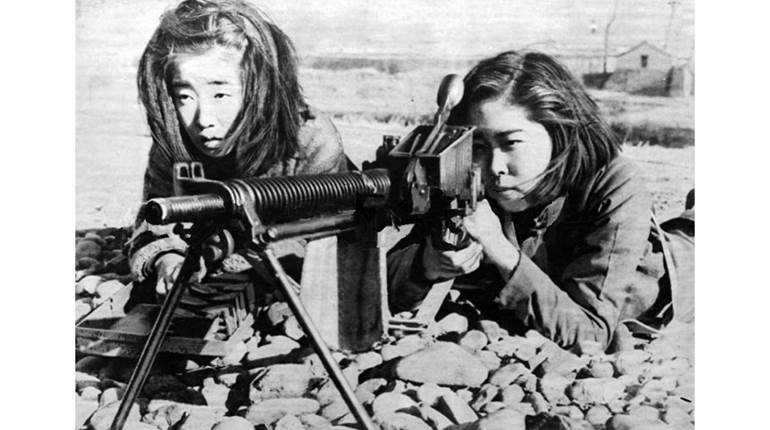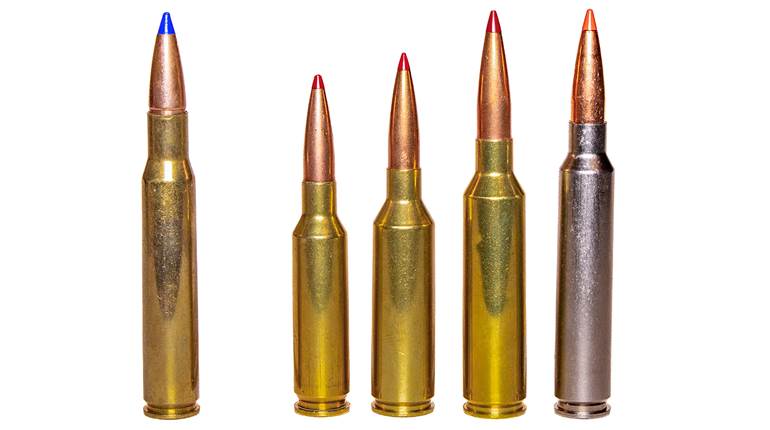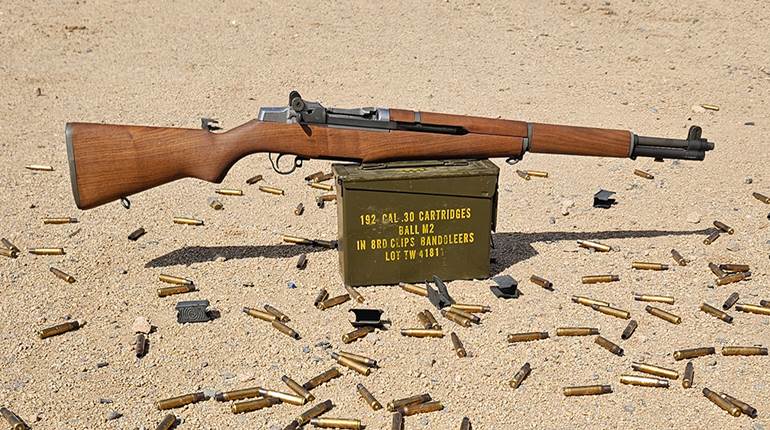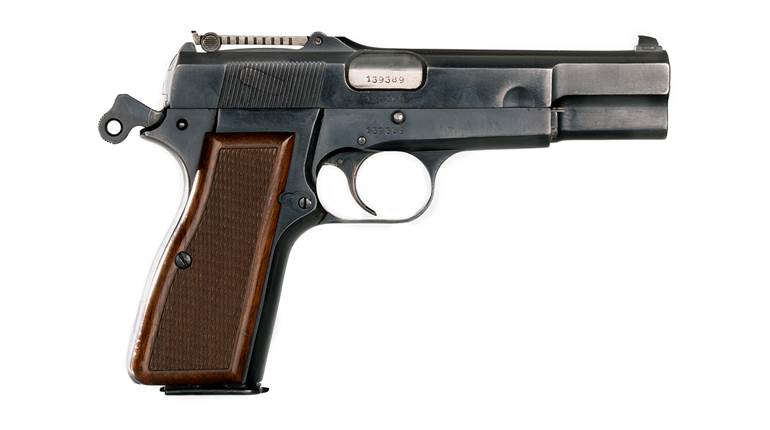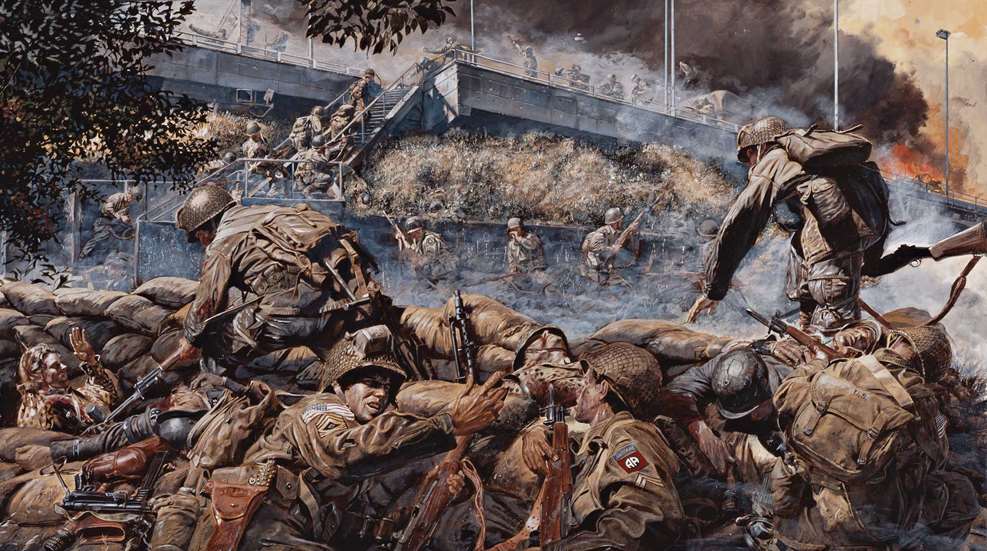
This article, "A Veteran's Account," appeared originally in the February 2006 issue of American Rifleman. To subscribe to the magazine, visit the NRA membership page and select American Rifleman as your member magazine.
Editor’s Note: O.B. Hill was with the 1st Battalion, 508th Parachute Infantry Regiment of the 82nd Airborne Division. He joined the U.S. Army in 1942, made the D-Day jump and was wounded after fighting in France. He was evacuated to England and rejoined his unit in time for the Battle of the Bulge. He was wounded a second time on Jan. 26, 1945. Hill passed away in June 2002.
“It Was A Bad Feeling …”
When I was in infantry training, we were issued M1903 Springfield rifles. We did our marksmanship training with ’03s. During our training, we had classes on the “new” M1 rifle. There weren’t enough of them to go around, so we shared rifles. They taught us how to disassemble and assemble the M1, and we got to fire it. I remember that during the class they taught the general principles about the rifle. They told us the speed of the bullet when it left the barrel and the gas pressure in the barrel. I don’t think any of that stuff stayed with me once I left the room. I liked the M1 very much, better than the ’03. It was semi-automatic, and since you didn’t have to work the bolt, it was easier to fire. It had less recoil and an eight-round clip.
After jump school, I reported to the 508th at Camp Blanding, Fla. I was issued an M1, and that was the rifle I carried all the way through the Normandy campaign.

The 508th went over to England and became part of the 82nd Airborne Division. We did quite a bit of training before the invasion. When we made the D-Day jump, our commander encouraged us to carry as much ammunition as we could. So I carried as many extra bandoleers as I possibly could, and I’m glad I did. In fact, I didn’t wear a reserve chute because I didn’t have room for it. I didn’t put my M1 in a case; I just pushed it between the harness and my body and jumped with it.
We were pretty scattered on the jump. I think I landed about five miles from where I was supposed to be. We formed a group; I had more men from the 508th than any other unit. But there were a few men from the 101st, one from the 505th and one from the 507th in my little group. I think I ended up with 28 men in the group once we all got together.
That night, we got in two firefights with the Germans, and I lost about half the men I had. After daylight, we ran into another group of paratroopers, and we joined them. We had no officers, no medics, no communication equipment and no heavy weapons. The heaviest things we had were our M1s and some grenades. We used a Gammon grenade to blow up a French Renault tank the Germans were using. We were in the second floor of a house, and it stopped immediately under us. The turret opened, and the guy stood up in it. I took the cap off the Gammon grenade and handed it to my buddy. He dropped it down the turret in front of the guy. That wiped that tank out. Our group fought for five days behind the enemy lines and then another two days before I was wounded.
“The most amazing thing about that M1 is you could throw that thing in a mud hole, drag it through it, pick it up and it would fire.”
—Darrell “Shifty” Powers, Company E., 506th Parachute Infantry Regiment.
As I mentioned, I’m glad that I carried the extra ammo. By the time my group was relieved by a patrol from the 90th Division on the fifth day, I was down to seven rounds of ammunition. Some of the guys were out of ammo, and the most anybody had was two clips. It was a bad feeling to be that low on ammo. My buddy and I asked every man if they wanted to give up or if they wanted to stay. Every damned man said that if we’ve stayed here this long, we can stay here forever. I was glad they said that, because we had already decided we would stay. That is what I called the “Airborne Spirit.”
I was wounded on the 13th of June and evacuated to England. I don’t know what happened to my rifle after I was wounded, I guess it stayed there.
I missed the operation in Holland while I was recovering in England. I returned to my unit in France, just before the Battle of the Bulge. Since I was an NCO, I was given a choice of what type of arm I could carry. I could choose between an M1 rifle, a Tommy gun, a regular carbine or a folding-stock M1A1 carbine. I chose to continue to carry the M1 rifle because it was an efficient weapon that had got me through some tough situations. I didn’t think having a Tommy gun was much of an advantage.
During the Bulge, I didn’t carry as much ammo as I had during the D-Day jump. Since we went into combat as a unit, it wasn’t necessary to carry as much. We were given an ample supply to last us for two or three days in case we got isolated, although I never thought we’d get isolated because we were fighting as a unit. At that time, I didn’t keep the clips in my belt or use bandoleers. I would keep the clips in my pockets and in my musette bag. Anyplace I had room, I kept clips there. I just thought it was more comfortable to carry the ammo that way, and I was able to carry all I needed. I still wore the ammo belt to carry my canteen, entrenching tool and the necessary things.
I fought in the Battle of the Bulge from the 17th of December though the 26th of January, when I was wounded the second time. I was sent to Paris to recuperate this time. I could have gone back to England, but I requested to rejoin the outfit. I got back to the 508th just about as the war ended. I stayed in Germany until August and was rotated home.
The M1 was a reliable weapon. I kept mine clean as much as possible. On the jump into Normandy, I landed in water, and my rifle got wet. Although it was wet, it worked just fine. However, during a lull the next day, I made sure to clean it so I’d be sure it would keep working. Even during the Bulge in miserable conditions, I cleaned my rifle every time I had the chance and tried to keep the snow and dirt out of it as much as possible. I never had any problems with it.












